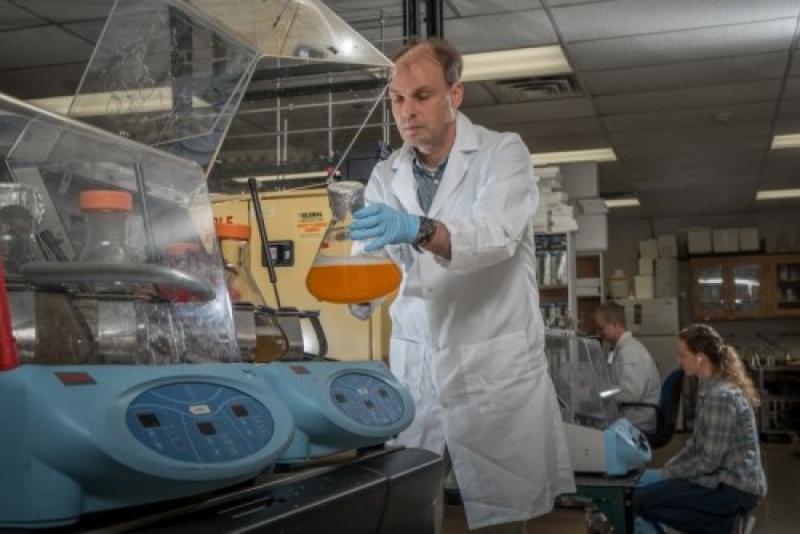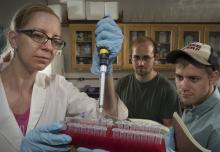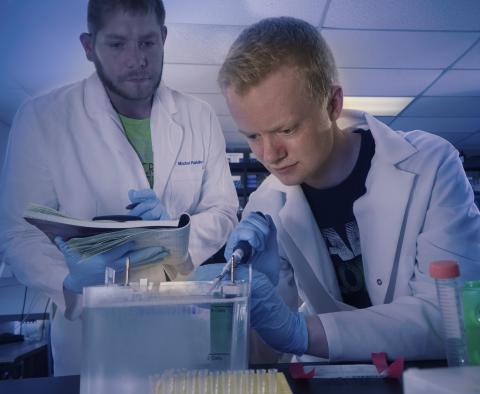Fight Against Alzheimer’s Comes to a DU Lab
DU professor hopes to lay groundwork for researchers to create early detection tests for the disease

Martin Margittai working inside his lab at the University of Denver. Photo Courtesy: Wayne Armstrong, University of Denver
In June, the U.S. Senate proposed a $400 million increase in funding for research on Alzheimer's disease. If approved, it would be in addition to the historic $350 million increase signed into law at the close of 2015.
This funding boost for Alzheimer's has major implications for what is currently the only leading cause of death in the United States without a prevention or cure. More than 28 million baby boomers will develop the disease over the next 35 years, according to the Alzheimer's Association, with $20 trillion in care expenses projected to eat up nearly a quarter of the nation's Medicare spending by 2040.
"It's a fatal disease and a huge dilemma for society," says Martin Margittai, an associate professor in DU's Department of Chemistry and Biochemistry. "From a medical and societal point of view, it's important that we find a cure as Alzheimer's is both care-intensive and cost-intensive."
Margittai hopes that the basic research that he carries out in his lab will contribute to the fight against Alzheimer's and related neurodegenerative diseases.





